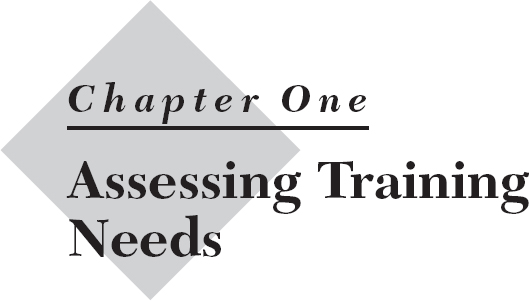
All too often, the training needs in an organization are viewed in isolation from the bottom-line results that the organization is seeking. As a result, training courses are not part of an overall strategy for performance improvement that supports organizational goals. When this occurs, the design of a training program is often approached on a hit-or-miss basis. Some trainers decide what they want to teach (or receive orders from management) without sufficient regard for what the participants need to learn so that the organization can succeed. All this can be avoided by making an effort to assess the need for training and the training participants prior to training. Gathering information about the training need and the actual or potential participants is the first step in designing an active training program from scratch or tailoring an existing one for a specific group.
Sometimes the opportunity to assess the training situation is limited by time constraints and a lack of availability of data. Even in less than ideal circumstances, however, some assessment is necessary before finalizing the design. At the very least, it is helpful to obtain whatever information you can to answer the following questions:
- What is the nature of the roles and tasks performed by the intended participants? What competencies do these roles and tasks require?
- How many participants will there be?
- How familiar ...
Get Active Training: A Handbook of Techniques, Designs, Case Examples, and Tips, 4th Edition now with the O’Reilly learning platform.
O’Reilly members experience books, live events, courses curated by job role, and more from O’Reilly and nearly 200 top publishers.

